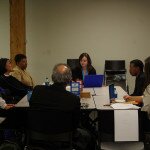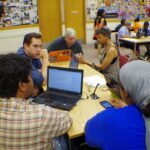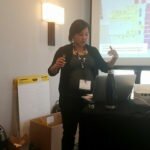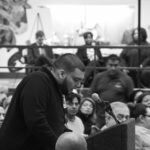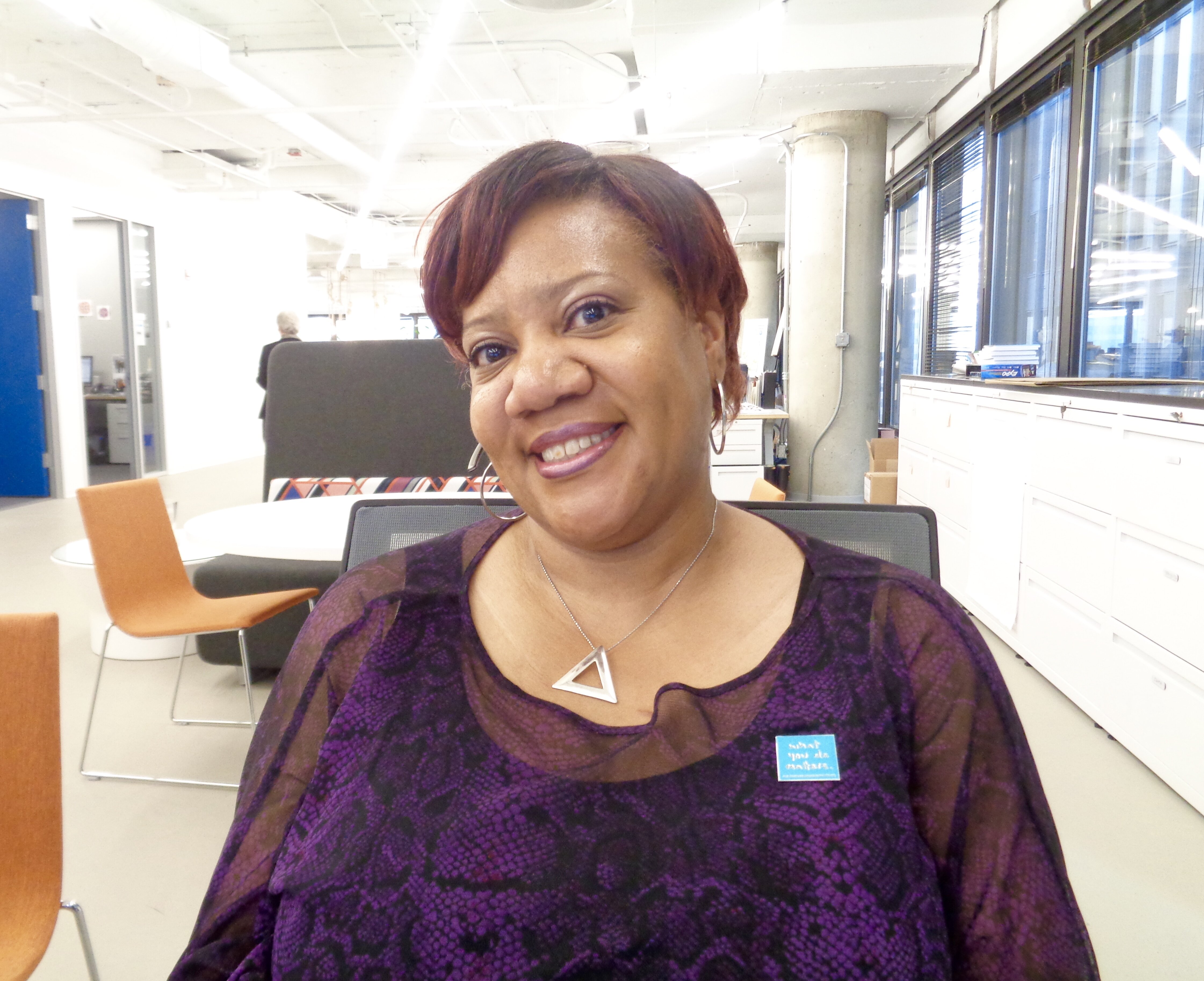Active listening is the art of focusing: lending your full attention to what a person or a bunch of people have to say and how they say it before responding.
It’s both a skill and a series of practices. Listening exercises have been utilized by community organizers for decades, often in two-way educational spaces. (More info about that and tactics to get you going here.) The goal of listening is to make space for individuals and communities to express themselves and define their own problems and ideas before imposing “solutions” upon them. In this way, listening is an essential civic skill.
As part of the Experimental Modes convening earlier this month, we conducted an active listening exercise to reflect on how those of us who do community-driven civic tech tell our stories. This was both part of building a common language for us in the room and to get us into gear for the case study sprint — a collaborative documentation project. (That you can still contribute to!)
Below, I’ve outlined the exercise we used. Try it out with a partner and try discussing your own work. What do you learn? What sticks with people when you tell your story that you didn’t expect? What do you spend time explaining? What resonates and what doesn’t?
Sample active listening exercise
3 – 5 minutes: Define the goal and the rules
The goal of this exercise is to learn how to understand your civic project through the eyes of someone less intimately acquainted with what it is and why you do it. You’ll work in pairs, taking turns playing the role of Speaker and Listener. When it’s your turn to speak, you speak. When it’s your turn to listen, you goal is to be as quiet as possible, focusing on what the other person says. You can take notes or doodle or whatever helps you listen, but your role is to listen. That means, no questions, no clarifications, no corrections. Just focus.
3 minutes: Break into pairs (or grab a buddy).
Pick an “A” and a “B”. Person A will be the first Speaker. Person B will start as the listener.
Round 1 — Discuss WHAT you do
2 minutes: Person A Tells Their Story
. For the next 2 minutes, Person A will be the Speaker, explaining who what their project is, who it’s for/who is involved, and, briefly, how it got started. Person B is the Listener. (Again, offering no feedback or solicitation.)
3 minutes: Person B Tells Person A’s Story.
For the next 3 minutes, Person B will reflect back what they heard from Person A. Person B speaks. Person A is only allowed to listen (and take notes) — no corrections.
5 minutes: Group Reflection.
(Scaled to as many participants are part of the exercise.) What’s hard about this exercise? What did Person B hear that you (Person A) didn’t expect? What did they miss? What words did they use that you don’t normally use to describe your work?
Round 2 — Switch!
2 minutes: Person B Tells Their Story.
3 minutes: Person A Tells Person B’s Story
2 minutes: Reflection.
Round 3 — Discuss HOW you do what you do
2 minutes: Person A Shares How
Person A is the Speaker. Person B is the Listener. Talk about how the project works, how you go about implementing it, connecting with the people you’re working for, etc — the strategic and tactical bits you’d share if you were making a recipe of your work. While you (Person A) talk, Person B will lesson, taking notes on the key strategies and tactics they hear.
2 minutes: Person B Shares How
Switch! Person B is the Speaker. Person A is the Listener. While Person B shares their recipe, Person A takes notes.
5 – 7 minutes: Reflection and review.
Together, look through the strategies and tactics identified. Think about and discuss the language your partner used to capture your description of how you do your work. What stands out? Take another few minutes and review what’s similar and different about the way you approach your work. If you’re doing this exercise in a group setting, after some internal conversation time, open this topic up to the group.
What do you see about your work that you didn’t see before? Which parts resonate — or didn’t? How will that affect your storytelling going forward?

